
Europe and Mediterranean: Castles Along the Rhine
Uniworld Boutique River Cruises
Cruise along the Rhine – Germany on one side, France on the other – and savor French joie de vivre and German Gemutlichkeit. Discover Alsace, whose dual French and German heritage has given it fabulous food and a wine-making tradition that goes back to the Romans. Bicycle beside the river, passing Roman ruins and Romanesque churches. Marvel at castles that were once mighty fortresses guarding territory and trade routes, that now tower above the water as romantic ruins. Visit the fairytale cities of Riquewihr, Kaysersberg, Colmar, Strasbourg and Rudesheim, and taste delightful white wines in the villages where the grapes are grown. Beethoven and Byron loved the romantic landscapes of the Rhine River. The beauty that inspired them is still yours to experience.

True All-Inclusive Boutique River Cruising™
All gratuities for onboard services
Unlimited fine wine, beer, spirits and nonalcoholic beverages**
Shore excursions with local experts as your guide
Internet and Wi-Fi
All arrival and departure day transfers
Executive Member Benefit
Executive Members receive an annual 2% Reward, up to $1,250, on qualified Costco Travel purchases
Receive a $50 shipboard credit per person (maximum $100 per stateroom)♦
Digital Costco Shop Card
Member Exclusive: Digital Costco Shop Card with every Uniworld® river cruise†
Sailing Itinerary

Note: Cruise itineraries are subject to change. Please verify ports and times directly with the cruise line.
Overview
Amsterdam is the Netherlands’ capital, known for its artistic heritage, elaborate canal system, and narrow houses with gabled facades, legacies of the city’s 17th-century Golden Age. Its Museum District houses the Van Gogh Museum, works by Rembrandt and Vermeer at the Rijksmuseum, and modern art at the Stedelijk. Cycling is key to the city’s character, and there are numerous bike paths.
Overview
Cologne (Köln), the largest city in the Rhineland, is so rich in antiquity that every time a new foundation is dug, the excavators come up with archaeological finds. Devastating though the World War II bombing was - nearly all the buildings of the Altstadt were damaged - reconstruction brought to light a period of Cologne's history that had been a mystery for centuries. Evidence showed that Cologne was as important and powerful during the early Christian era as it was during Roman times and the Middle Ages. Cologne traces its beginnings to 38 B.C. when Roman legions set up camp here. As early as A.D. 50, the emperor Claudius gave it municipal rights as the capital of a Roman province. In the early Christian era, a bishopric was founded here and several saints were martyred, including the patron of the city, St. Ursula. During the Middle Ages, as Cologne became a center for international trade, Romanesque and Gothic churches were built with prosperous merchants' gold. Today there is much to see from every period of the city's 2,000-year history - from the old Roman towers to the modern opera house. But Cologne is also a bustling modern city, with a lively population. It's also increasingly becoming the fine-art capital of Germany.
Overview
At a glance, the city of Koblenz reflects all the typical military clichés in German history. Ritter des Deutschen Ordens (Knights of the German Order) settled at the confluence of the rivers Mosel and Rhine and named the tip of land between the two bodies of water the “Deutsches Eck” (German Corner). There, the German Emperor Wilhelm I reigns on his bronze battle horse while looking down imperiously from his monument’s pedestal on the two rivers flowing together in front of him, the Rhine and the Mosel. On the other bank of the Rhine, the threatening Prussian fortress, Ehrenbreitstein is visible. This side of Koblenz reminds us of military and war, of sables rattling and canon shots thundering. The green hills of the Eifel region, of Hunsrück, Taunus, and Westerwald meet where the Mosel flows into the Rhine. Facing the monument at Deutsches Eck back in 1930, the satirist Kurt Tucholsky called it the “gigantic cake decoration” and found that the area was much too pretty for this “rocky clump”.Deutsches Eck, the Emperor’s monument, and the Prussian fortress still attract many tourists to the city every day. The buzzing of video cameras and snapping of pictures sometimes even drowns the clamor of international voices. Surely the labyrinth of winding little streets in the romantic old city center has utterly delighted many a Japanese traveler and then, driven them to resignation and despair. With eyes on the binoculars at all times, the enthused visitors from the Far East can easily lose their orientation and get lost, only to find themselves in one of the many wine bars and then, surrendering to their fate, trying to console themselves with many pints of wine from the Rhine or Mosel region. This all wouldn’t be necessary if visitors from faraway Nippon would consult a handy travel guide by Karl Baedecker, who currently runs the travel publishing house, Baedecker, in Koblenz. But the palatable regional wine doesn’t particularly care whether it is drunk with or without the travel guide. And neither do the dozens of local bar owners.The bar and restaurant owners in Koblenz may be pleased about the money the tourists spend when visiting the city, but otherwise,e during high season, the 110,000 inhabitants avoid the old city center overrun with tourists. The inhabitants of Koblenz don’t have much time for tourist leisure, as people seem to work a great deal. The Rhine harbor, industry, the service sector, and of course, the numerous public authorities of the state of Rheinland-Pfalz, as well as the Federal Republic of Germany, are places where the people earn their daily bread. In Koblenz, 12,000 members of the German armed forces fulfill their daily duties. The concentration of military in the city has always been a characteristic of Koblenz, from the Roman times until the present. The situation wasn’t always rosy for the city on the Rhine and Mosel. During World War Two, destiny struck at the gates of the city like Ludwig van Beethoven’s 5th Symphony. Allied bombers blew Koblenz, an important military center, into debris and ashes. Speaking of Beethoven, Maria Magdalena, the composer’s mother was born on Wambachstrasse in Koblenz. Nowadays you can visit the largest private Beethoven exhibition in the world here. One of the contemporaries for whom Ludwig van Beethoven felt the deepest contempt was Prince Metternich. The conservative hard-liner of the 18th century was born in Koblenz in 1773. It’s strange how time passes and history evolves in one place. To have a sense of this change, just think of the new university campus at Koblenz. It was once a place where military commands were bellowed and now it's a quiet place for academics. An old barrack complex hosts students and professors. And Where? In Metternich, a district of Koblenz.
Overview
In the Valley of the Lorelei Rock as well as on the heights of the nearby Hunsruck Mountains, Boppard has a lot to offer in many respects both to residents and guests. In the course of history, all kinds of people have felt at home here, whether Celts, Romans, or Franconians. All of them have left their mark on the 2000-year-old history of the town and at every turn there is witness in stone of their presence. Boppard is beautiful. The charming, unmistakable natural beauty of the town and its surroundings as well as the numerous monuments to its culture and history evoking memories of the different epochs of its history are called to mind as one walks through the town. One of the few national Goethe Institutes has its seat in Boppard which was set up here twenty years ago and there are four partner towns in France, England, Hungary, and Japan which underline its international character. Boppard's wines are among the best to be had anywhere. The wine produced here has a very high reputation and was mentioned in official records over 1350 years ago. This is well understood when one remembers the fact that the largest net of vineyards along the central Rhine area in Bopparder Hamm count among the steepest wine-growing districts with an approximate cultivated surface of 75 hectares. There are many opportunities to enjoy Boppard's wine during the year. For example: at "Boppard Wine in the Spring", at "Bopparder Weinkost" (wine-tasting), or – and this especially – at the Boppard Wine Festival. The vintners of Boppard market their wines themselves. It's a good idea to leave enough room in the back of the car for later home consumption! If you don't want to wait for one of the wine festivals, then Hotel Deutsches Haus regularly offers wine-tasting. How wonderful nature is! Historical Boppard lies at the foot of an unspoiled, wooded mountainous area which is part of the slate hills of the Rhine's littoral countryside. Nature lovers, botanists, and ornithologists are in their element when it comes to an exploration of Boppard and its environs. The unique character of the natural surroundingmakeske it an ideal place to ramble. One can discover the hiker's paths for oneself or spy out the Rhine's tributaries and their valleys in the high places above it. Furthermore, for your leisure and pleasure: tennis, golf (18-hole golf course), swimming, riding, gliding, cycling, and boat trips. Of particular and unique interest in Boppard is the Thonet Museum (Bentwood furniture) with its approximately 100 exhibits. Take your time to enjoy your time. It's a good idea to join a guided tour to show you all the delights of this charming little town. If not on foot, then by town tour with the mini-train. The chair-lift offers visitors a bird's eye view of the largest Rhine meanderings together with the Bopparder Hamm. After a trip with the Hunsruck Railway, which takes you through breathtaking scenery, there is the possibility of hiking in the forests. Boppard has seen a turbulent past. At a time when the area lying between the Rhine and the Moselle, the Hunsruck region, was still thickly wooded, the Celts came to settle here. About fifty years B.C., Roman legions marched to this point along the Rhine, then a liquid territorial boundary or "limes". Later they erected a large fortress. After the fall of the Roman empire, Franconian tribes settled in what is now Boppard which, in the Middle Ages, later became an imperial city. An impressive building is the electoral castle (Kurfurstliche Burg, also known as the Kurtrierische Burg), which Balduin von Trier erected in 1327. The small fortress served as a customs castle on the Rhine, a building that assured its owner of a lucrative living from the tithes and tolls levied upon Rhenish traffic.T he Archeological Park leads back to Roman times. Also of considerable interest is the mainly late Romanesque building of St Severus Church on the Market Square. One thing that must not be missed is the Carmelite Church, built in 1300 which, after a fire in 1730, was reconstructed in the Baroque style. The cloister belonging to it is the town's administrative building today.
Overview
Germersheim is a town in the German state of Rhineland-Palatinate, with around 20,000 inhabitants. It is also the seat of the Germersheim district. The neighboring towns and cities are Speyer, Landau, Philippsburg, Karlsruhe, and Wörth.
Overview
Situated provocatively on the Franco-German border, over the centuries, Strasbourg has been passed back and forward like a ping-pong ball between these two countries. Annexed to France in 1681, after centuries of self-rule, Strasbourg was subject to German control from 1871 until the end of World War I and again between 1940 and 1944. The result is a city and people with a strong and distinctive local identity, combining the reputed efficiency and work ethic of the Germans with the lightness and sophistication of the French.The name Strasbourg comes from Strateburgum, ‘the city of the roads’, because of its strategic geographical position on the west bank of the Rhine. Today, it could be called ‘the city of the trams’, due to an excellent and recently expanded network. The city was already a thriving commercial center in the Middle Ages when building began on the impressive Cathedrale Notre-Dame. Its intellectual and artistic heights were reached during the Renaissance. In 1566, the university was founded and leading figures of the Reformation settled in Strasbourg. Religious strife during the 16th and 17th centuries caused considerable upheaval, although the 1681 annexation of the city by France brought stability and enabled Strasbourg to reassert its economic strength. Its symbolic significance as a major European city was confirmed when it was chosen as the seat of the Council of Europe in 1949, the European Court of Human Rights in 1994, and the European Parliament, whose position was finally guaranteed in 1992. After Paris, Strasbourg is now France’s most important diplomatic town.Strasbourg is far enough away from the capital to be truly independent on a cultural level, with its opera, France’s only national theatre outside Paris, two international music festivals, and Europe’s only bi-national TV station, Arte. Its international student population, of some 50,000, keeps the city vibrant and intellectually alive. Strasbourg is host to the permanent campus of the International Space University (ISU) and the Ecole Nationale d’Administration (ENA), the prestigious French Grandes Ecoles that relocated to Strasbourg in 1992.The Grande Ile (Big Island) is the heart of the city, encircled by the Ill River and Fossé du Faux-Rempart canal. The dominant landmark in Strasbourg is the Cathédrale Notre-Dame in the Vieille Ville (Old Town). It has remained unchanged since the Middle Ages. Around the cathedral, an impressive collection of museums is clustered. The central square is place Kléber – named after the brilliant Strasbourg-born military officer, Jean-Baptiste Kléber (1753-1800), who was singled out by Napoleon Bonaparte for high office in Egypt. Close by, is place Gutenberg – named after Johannes Gutenberg, who resided in Strasbourg between 1434 and 44, perfecting his famed printing press with moveable metal type. The main streets – rue des grandes Arcades and the parallel rue des Francs Bourgeois – are remarkably small and pedestrian-friendly. The Petite France area in the Grande Ile’s southwestern corner, crossed by canals, is Strasbourg’s medieval quarter and classed as a World Heritage Site by UNESCO. Its half-timbered houses and narrow streets could not be more different from the ultra-modern City of Europe to the northeast of the city. Strasbourg enjoys the semi-continental climate of the Alsace region, with sunny, warm, and dry conditions. Nevertheless, because of the traditional Christmas market – the peak tourist season extends from May right through to the end of December.
Overview
The Cathedral of St Stephanus, the town`s most prominent landmark, is visible from far and wide. It stands perched high above the Rhine on the Münsterberg (Cathedral Hill), which has been the site of human settlements for over 4,000 years. Breisach lies in one of the warmest parts of Germany, directly next to Alsace and the famous wine-growing region of Kaiserstuhl.
Overview
These multiple facets influence the artistic and cultural life of the place. Apart from its contrasting architectural styles, it has over 30 museums and galleries as well as many small theatres - besides the City Theatre with its repertoire of operas, operettas, and plays - and the first Musical Theatre in Switzerland, all waiting to be visited. The new art and cultural scene is nothing like the traditional version. For example, many industrial buildings have been converted and now serve as the setting for concerts and club evenings. The possibilities of Basel are unlimited and its borders are always open for a quick trip into neighbouring France or Germany. Nestled in the Three Countries of Germany, France, and Switzerland, Basel is a city full of surprises. The city canton with roughly 190,000 inhabitants and a 2000-year history is located on the bend of the Rhine on the borders with France and Germany. The city offers a unique range of culture and art and possesses one of Europe's most attractive and best-preserved Old Towns.
Onboard the S.S. Antoinette
S.S. Antoinette
Year Built: 2011
Double Occupancy Capacity: 164
When you step aboard the S.S. Antoinette, you'll understand why the "S.S." precedes "Antoinette," as this appropriately means "Super Ship." Aboard ship, the ambiance is reminiscent of France's Château de Versailles during the late 18th century, with the character of the past thoughtfully blended with unusual touches to create a feeling of luxury, warmth and elegance. A blue Strauss 10-foot Baccarat chandelier with huge sapphires, originally hung in New York's famed Tavern on the Green, graces the two-story lobby. Fine Brazilian marble adorns the walls and floors, and a sparkling 19th-century Venetian glass mirror rests high above the reception desk, providing an air of grandeur. The S.S. Antoinette shares the same exquisite standards and meticulous attention to detail reflective throughout Uniworld's fleet. Haute design with comfortable décor symbolize the style and grace for which Uniworld ships are known.
Activities & Services (included in cruise)
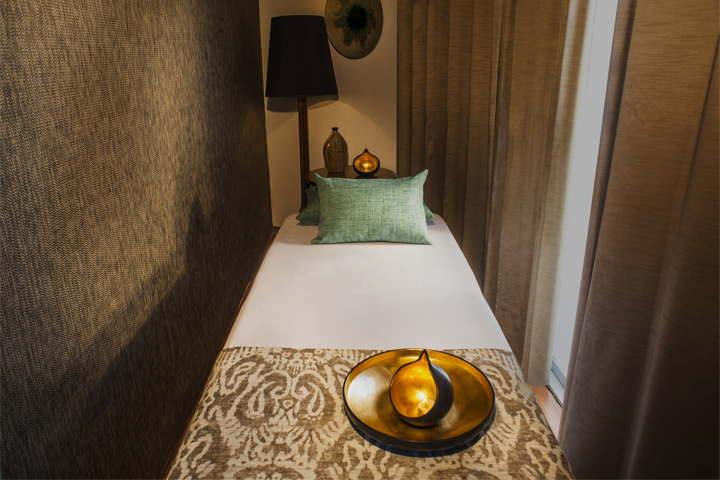
Spa
- Theater/Show Lounge
- Fitness Center
- Pool - Outdoor
- Bars/Lounges
- Elevators
Activities & Services (available for an extra fee)

Duty-Free Shops
- Spa Services/Massage
- Dry Cleaning/ Laundry Service
- Duty-Free Shops/Boutiques

Main Dining
Main Dining
Restaurant de Versailles (open seating): This seating option allows you to choose when and with whom you dine. Menus are a blend of classic cuisine with a touch of contemporary elegance, and are created using only the finest and freshest ingredients often brought onboard from local ports of call. You'll be surrounded by the beauty of passing riverbank towns and villages.
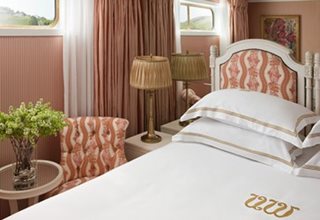
Category: CL
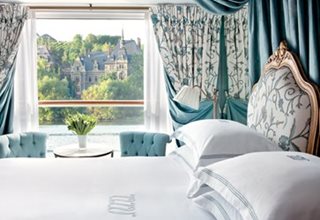
Category: FB
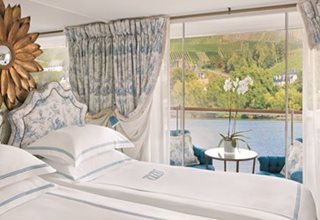
Category: DB
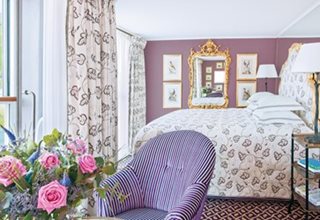
Category: S
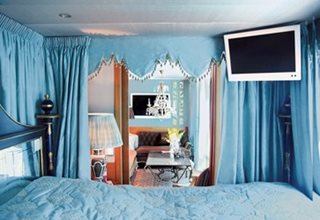
Category: GS

| Symbol | Description |
|---|

- Ship Name: S.S. Antoinette
- Year Built: 2011
- Year Entered Present Fleet: 2011
- Ship Class: Sister ship to River Beatrice
- Maximum Capacity: 164
- Number of Passenger Decks: 4
- Number of Crew: 45
- Officers' Nationality: International
- Ocean-View without Balcony: 20
- Ocean-View with Balcony: 53
- Capacity Based on Double Occupancy: 164
- Country of Registry: Switzerland
- Total Staterooms: 82
- Suites with Balcony: 9
- Crew/Hotel Staff Nationality: International
Costco Member Reviews

Available Dates & Prices
Terms & Conditions
*Price shown is per person based on double occupancy and is valid for select stateroom categories only. Click on the Terms & Conditions link below for details.
**Unlimited beverages include premium wine and premium spirits. Diamond List of wine and spirits is available at an additional cost.
♦Executive Members receive a $50 shipboard credit per person, maximum $100 per stateroom. Executive Member benefit is valid for primary cardholder only. Shipboard credit is per stateroom based on double occupancy. Shipboard credit will be applied to your onboard account. Any unused portion of the credit is nontransferable, nonrefundable and may not be redeemed for cash.
†One Digital Costco Shop Card per room/stateroom, per stay. The exact amount of the Digital Costco Shop Card will be calculated during the booking process. The Digital Costco Shop Card promotion is nontransferable and may not be combined with any other promotion. A Digital Costco Shop Card will arrive by email approximately 10 days after the start of your cruise. Click on the Terms & Conditions link below for additional information.
Ship's registry: Switzerland
Digital Costco Shop Card
This booking includes a Digital Costco Shop Card which will arrive by email one to two weeks after you return from your vacation. The Digital Costco Shop Card is a convenient payment option in our warehouses and on Costco.com.














